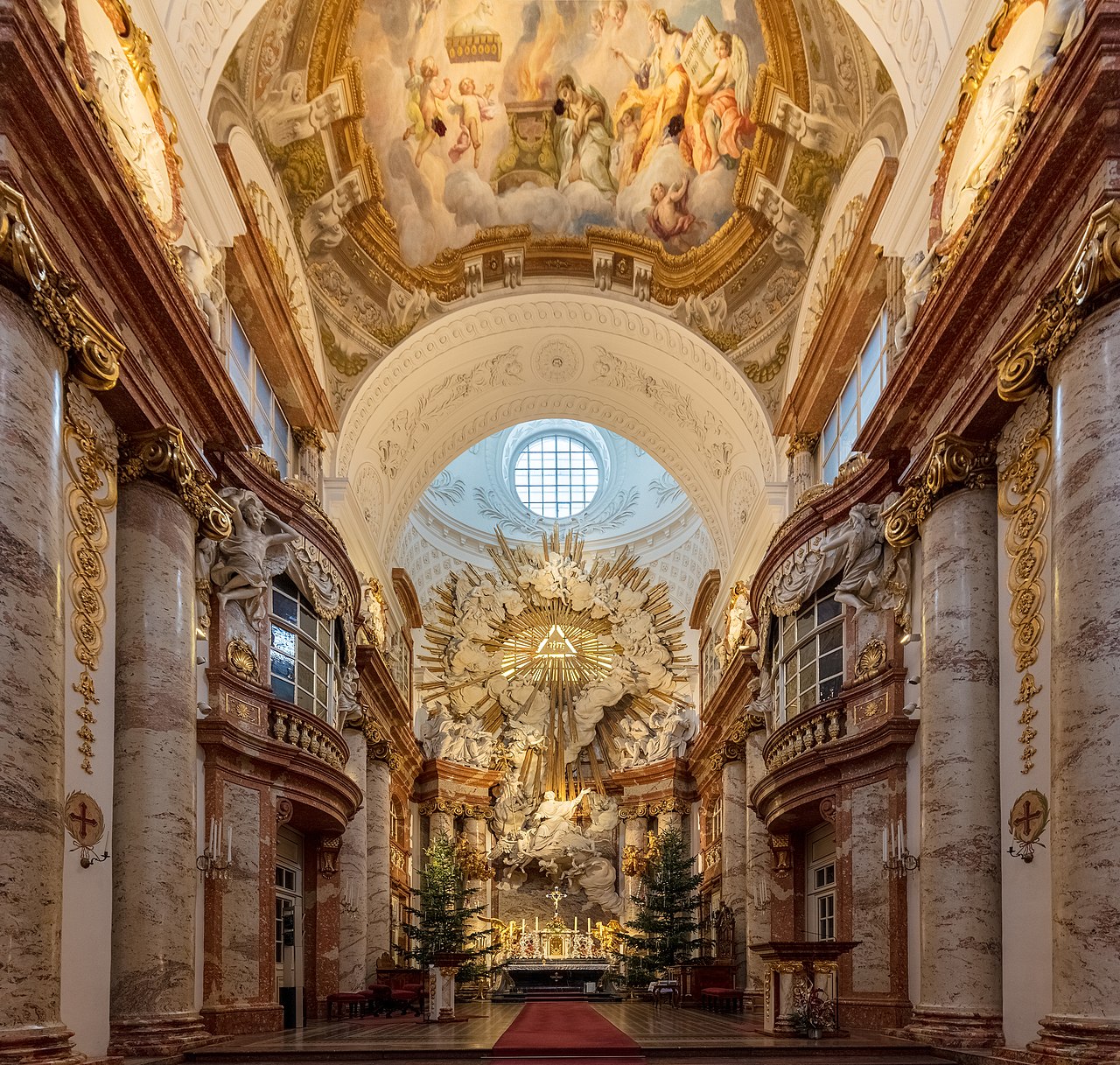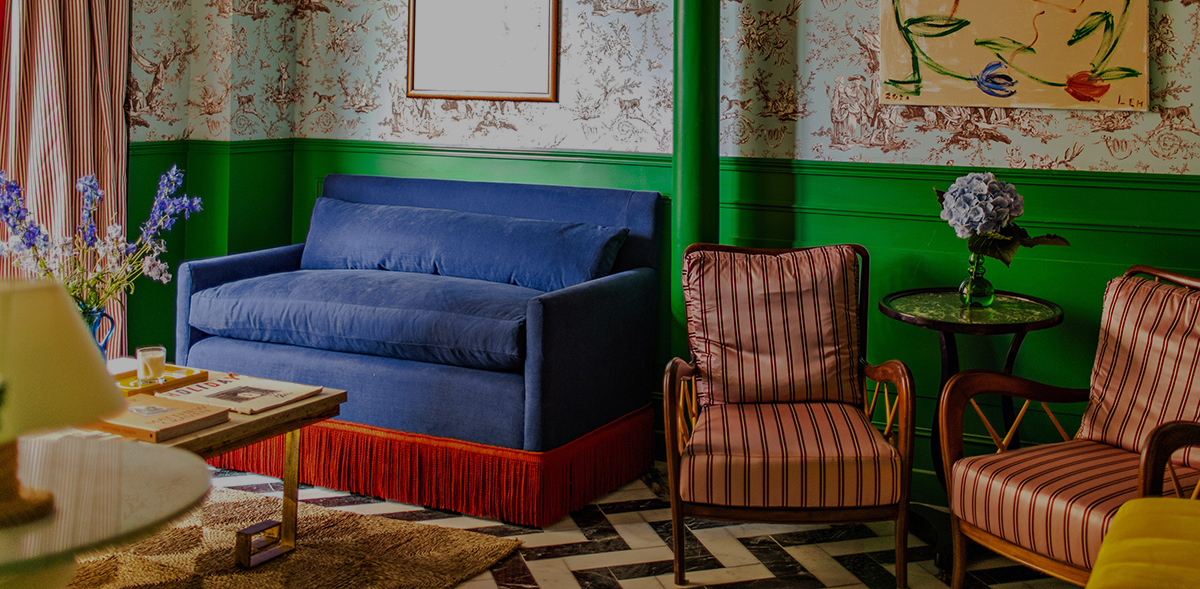Architects: Want to have your project featured? Showcase your work by uploading projects to Architizer and sign up for our inspirational newsletters.
Exquisite excess —that’s how the en vogue craze of maximalism is often framed. The flamboyant style is regarded as the fun-loving antidote to pared down seriousness of minimalism. Where minimalism champions simplicity, order, comfort and harmony, maximalism rebuffs the status-quo and advocates for overstimulation, confusion, embellishment and bravery. Now, swirls of color and contrasting fabric are woven into the vibrant fabric of Ridley Scott’s latest film, House of Gucci — aptly described by Time as a “rococo-a-go-go true-crime drama.”
Once reserved for elite exhibitions of wealth and stature, the excess of maximalism was traditionally seen as a showcase of abundance. In the movie, which profiles the almost unbelievable story of the fall of the Gucci family empire, this certainly holds true. However, while the film’s aesthetic of 1980’s excess relies on these traditional associations to bolster the dramatic plot, the maximalist costumes and set designs are also very much aimed to appeal to viewers in the 21st century. That is, the movie also taps into today’s design sensibilities — just think about the casting of Lady Gaga, whose maximalist fashion choices have always been a part of her personal brand!
Time brings change, and various iterations of maximalism have flourished in the past decades, culminating in the return of maximalism in the present day. While overcrowding is no longer key, layered textures, prints, colors and profiles have — much to our delight — become the fundamentals of successful maximalism. What is more, the aesthetic expression is no longer limited to one class strata — the statement of superabundance is less and less about showcasing one’s personal wealth and more and more about showcasing taste, personality, and, more simply, having fun with interior decor.

Baroque Maximalism – St. Charles Church (1737) by Johann and Joseph Bernhard Fischer von Erlach, Vienna, Austria Photograph by Diego Delso via Wikimedia Commons
As an interior design strategy, maximalism has reared its (not so ugly) head many times over the centuries. In modern times maximalism took a firm grip of creativity and craftsmanship during the Baroque period and led with confidence right on into the Georgian era. The ostentatious style was hugely popular with the Victorians, as its over embellished style was heavily influenced by the architecture of the Roman Empire and Ancient Egypt — both were idolized during that time.
Throughout the Georgian period, French and Italian Rococo, Baroque and Regency Styles espoused aesthetics of excess, many of which remain as some of the most fabulous examples of interior design that we can still see today. The trend culminated its extensive run of popularity in the early 20th century, at the end of the Art Deco movement and the beginning of The Great Depression.
Following a 200-year reign that was ended by the modernist era, maximalism has yet to be readopted as a mainstream design style. It would be fair to say that the proclivity for radical technicolor in the 1970s was about as close as we have ever been to a revival, with the 1980’s floral overload coming in at a close second. Since then, however, minimalism has ruled supreme, honing and shaping the world of clean lines and muted palettes we see today.
While maximalism may not yet be mainstream in today’s modern designs, it is certainly on the up and up — the exaggerated and experimental style found a comfortable home on the runway, and in the fast-paced, ever-changing industry of fashion, where bravery and audacity are revered. Maximalism has become a force to be reckoned with as many designers embrace the radical. None more so than maximalist deities Gucci. As the architects and designers of the world turned their backs on the bizarre, the bold luxury fashion brand Gucci jumped in with both feet and made maximalism its whole identity.
Throughout its lurid, fantastical and fascinating history, Gucci championed the audacious in its designs and, while it was not always to everyone’s taste, the fashion house’s determination to stay on brand seems to have reignited a fire in its cross-industry counterparts. With the appointment of long-term designer Alessandro Michele as Creative Director, the maximalist aesthetic kicked it up a notch. His impactful design strategy has successfully adorned the runway for almost seven years now, and — as it always does — the design industry has sat up and taken notice.
Hôtel Les Deux Gares by Luke Edward Hall, Paris France Photographs by Benoit Linero
Hôtel Les Deux Gares by Luke Edward Hall, Paris France Photographs by Benoit Linero
Much like its tale of old, maximalism has been favored by the famous and fortunate. As celebrity designers let loose in the homes and hotspots of their peers, maximalist interiors are popping up worldwide and are becoming increasingly courageous with every passing project, pushing the boundaries of design aesthetics and forcing us to question everything we thought we knew about design.
Are we sitting on the precipice of a new era for interior design? While the maximalist style of the past sought to announce wealth and ostracize the less fortunate, the new wave of maximalism appears to be more nuanced. No longer fetishizing objects for their financial value but noting that true value lies within the perception of worth.
Castle of Trematon | HOUSE OF HACKNEY, Cornwall, England Photograph by Mark Cocksedge
Castle of Trematon | HOUSE OF HACKNEY, Cornwall, England Photograph by Mark Cocksedge
Today, to look at a maximalist home is to get a sense of a person — the places they’ve visited, their personality and their heritage. It is often a loosely curated collection of the random objects they’ve amassed over a lifetime. Today maximalism is a physical, tangible story we can walk around and explore, it removes the need for rhyme and reason: “Simply because I liked it” is enough explanation for any given print, color or object. At the end of the day, maximalist interiors are another opportunity to be brave and to show people who we are and to be confidently vulnerable with the spaces that we occupy.
Coordination takes a backseat while color, pattern, shape and texture confidently clash to tell their tale. Perhaps by adopting this way of thinking, the wasteful cyclical design patterns of the past, striving to remain “on trend” and “fashionable” will fall by the wayside, and the practice of overhauling possessions at regular intervals will cease. At the very least, the acceptance of maximalism will provide some freedom in knowing that the stuff you have already might actually be quite cool to keep around even if it doesn’t match the wallpaper.
Architects: Want to have your project featured? Showcase your work by uploading projects to Architizer and sign up for our inspirational newsletters.
